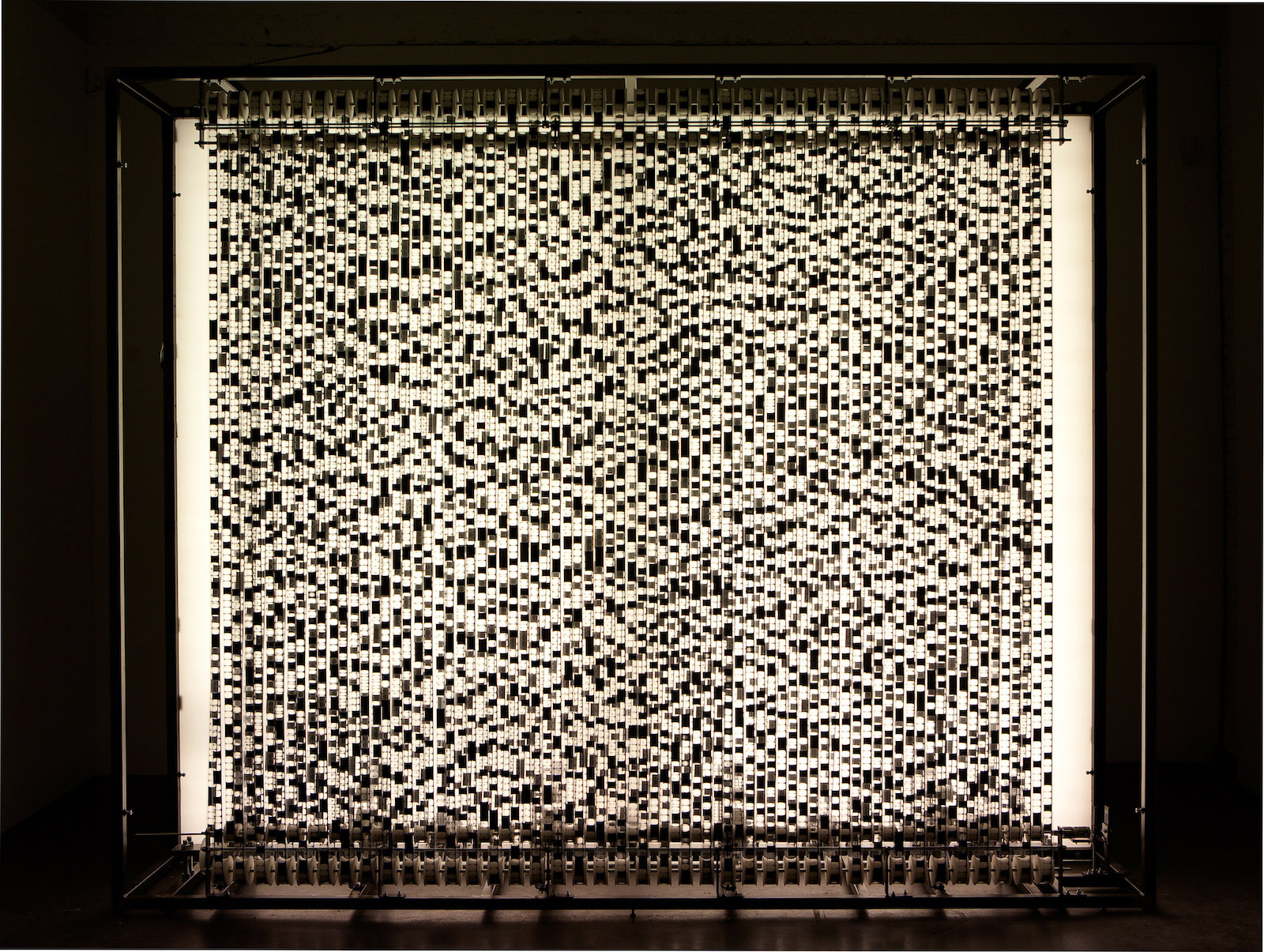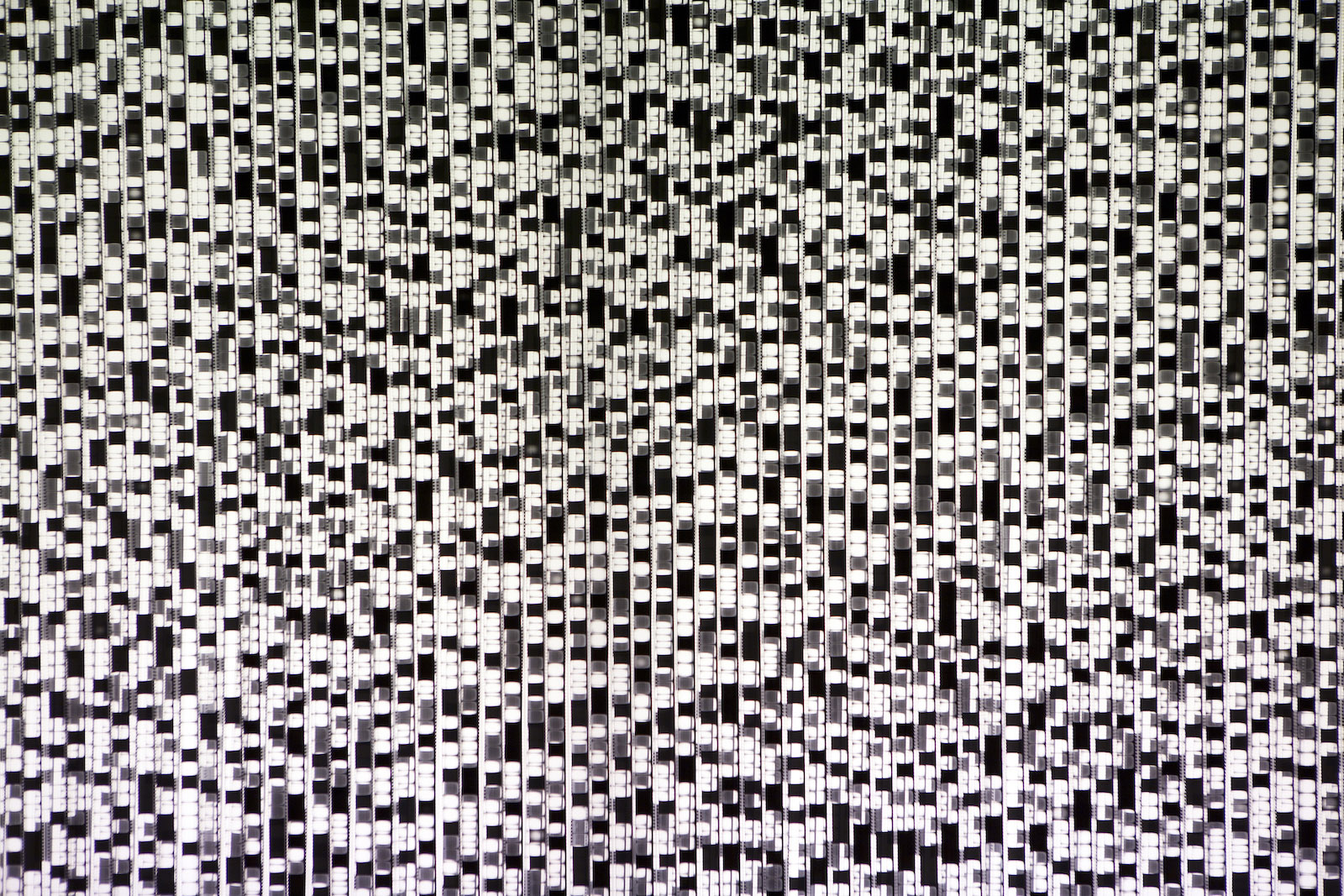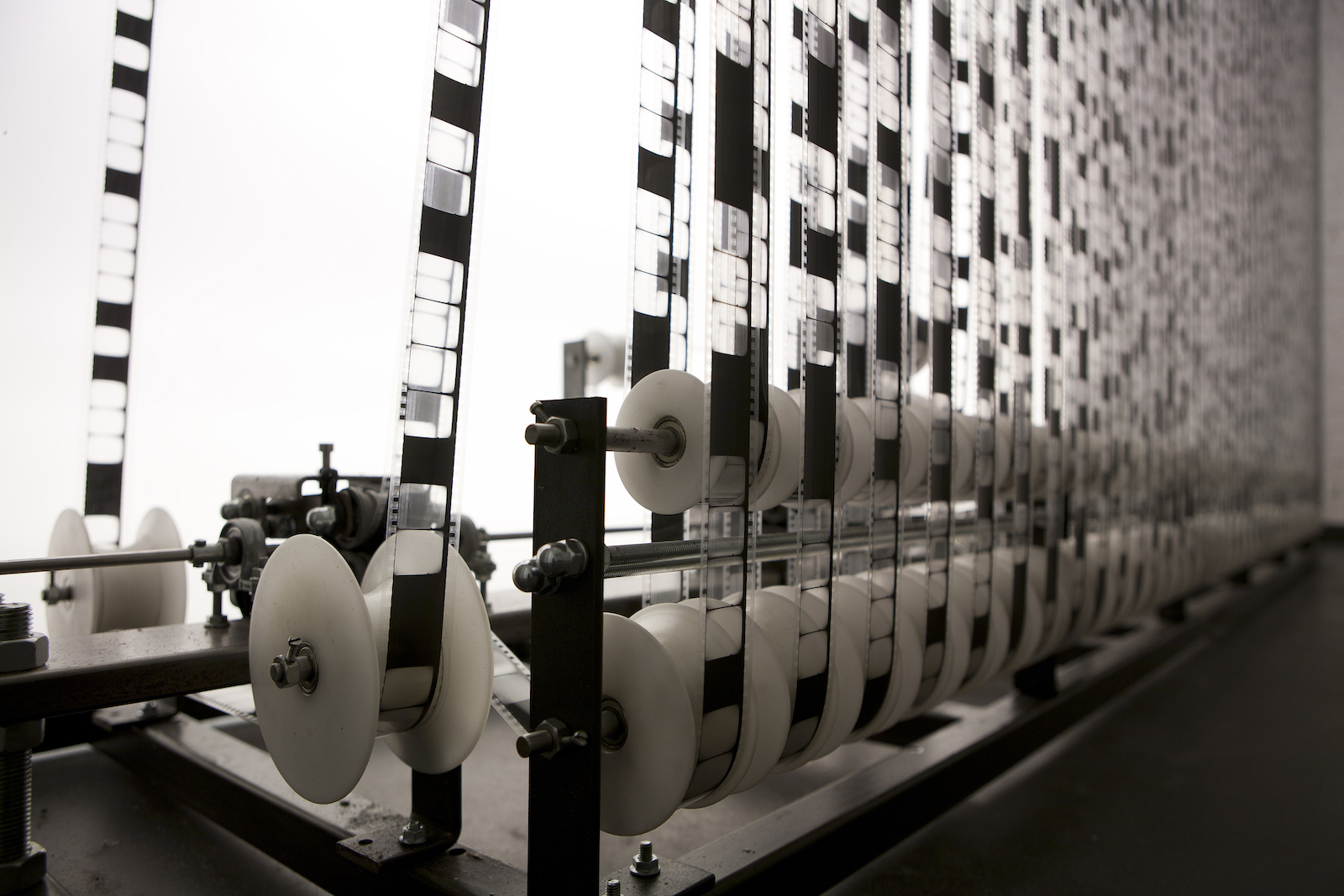Continuization Loop
Wim Janssen, 2010
Concept and realization: Wim Janssen | Produced by Werktank | With support of the Flemish Authorities.
Previously
2014 - Seconde Nature, Aix-en-Provence (France)
2012 - Exit Festival, Créteil (France)
2011 - Ars Electronica, Linz (Austria)
2011 - Vooruit, Gent (Belgium)
“Static/Continuization Loop” are two works by Wim Janssen about the phenomenon of television static. The same recognizable and commonly known image of television static is being generated through two completely different techniques. Not the image itself, but the way it is reconstructed and materialised, is the most important part of the Statics-series.Television static is not just an abstract image, but also a figurative one. It is in fact an artifact of technology, a physical phenomenon and unwanted by-product. It is recognizable as what it is, static, but also has a certain iconic meaning.
Wim Janssen tries to imitate and materialize static by means of an apparently slow and inefficient process.
In “Continuization Loop”, a single 35mm film loop is pulled up and down over more than 150 guiding wheels, creating a wall of film. The frames of this piece of film are only black or transparent. When the loop travels through the mechanism, the image of video static appears.
While film as a medium normally makes images appear through projection in combination with the transport of celluloid through a projector, Continuization Loop omits the projection and makes the image appear by means of the transport only.
The installation combines and imitates visual elements from three generations of visual media: the material aspect of film, the empty signal of video and the binary logic of digital. But at the same time the most important attributes of these media are absent: there is no construction of an illusory filmspace, there is no real video image and there are no computers involved.
“Static / Continuization Loop” zijn twee werken van Wim Janssen over het fenomeen televisieruis. Hetzelfde herkenbare en algemeen bekende beeld van televisieruis wordt gegenereerd door middel van twee totaal verschillende technieken. Niet het beeld zelf, maar de manier waarop het wordt gereconstrueerd en gematerialiseerd, is het belangrijkste onderdeel van de statica-serie.
Televisieruis is niet alleen een abstract beeld, maar het kan ook figuurlijk opgevat worden. Het is in feite een artefact van technologie, een fysisch verschijnsel en ongewenst bijproduct. Het is herkenbaar, statisch, maar heeft ook een zekere iconische betekenis.
Een lange lus 35mm film wordt in banden op en neer getrokken. Op de film staan enkel transparante of zwarte frames. Wanneer de lus in beweging wordt gezet verschijnt een beeld dat lijkt op video ruis.
Terwijl een filmbeeld normaal tot stand komt door projectie en het transport van de pellicule in functie van de projectie staat, wordt in deze installatie de projectie genegeerd en wekt het transport zelf het beeld op.
Het werk leent eigenschappen van drie generaties van bewegende beeldvorming. De materiële drager van film, het lege signaal van video en de binaire logica van digitaal. De belangrijkste eigenschappen van elk worden bij wijze van spreken in de kou gezet: de projectie van een illusoire ruimte in film wordt genegeerd, het dode signaal van video wordt op de voorgrond gezet en de flexibiliteit van het digitale blijft achterwege.


